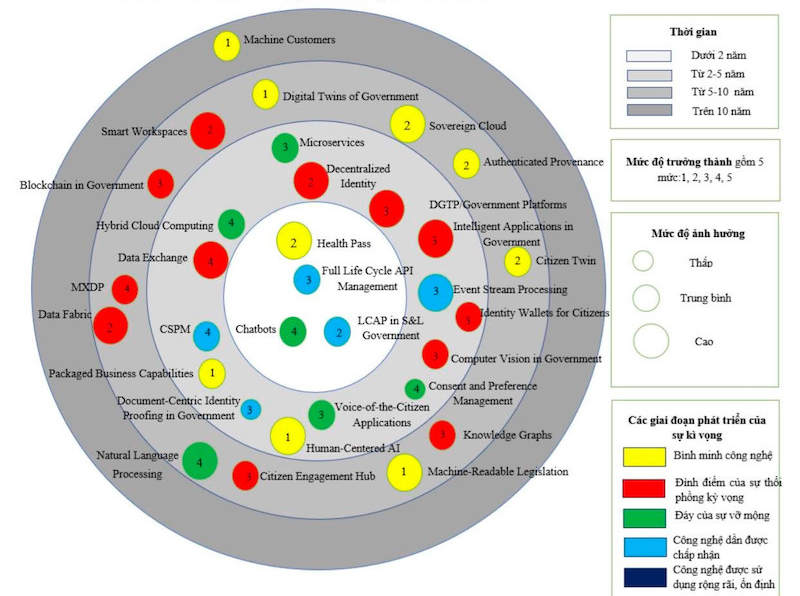First Information Technology and Communication Map of Vietnam announced
The Information Technology and Communications Map is a tool that supports management, forecasting, and decision-making in technology research and development.
The Information Technology and Communications Map was first announced by the Ministry of Information and Communications (MIC) at the quarterly conference on October 9.
This is also the first ministry to research and introduce a technology map for its jurisdiction.
| The map of digital government |
Vietnam aims to rapidly access and efficiently apply advanced digital technologies, master them, and create "Made in Vietnam" digital service products, according to Nguyen Khac Lich, the head of the MIC's Department of Science and Technology.
"The construction of the map aims to answer these three questions and serves as a tool to support management, leadership, decision-making, evaluation, application, and optimal investment in technology research and development to achieve the highest efficiency," said Lich.
The map provides information on eight main areas, including telecommunications, postal services, press, publishing, e-Government, information security, digital education, and
Each map consists of a descriptive document and a graphical page (map) that provides concise information about the technologies impacting the respective area.
A total of 32 digital technologies are utilized within these domains, and the level of technology impact is categorized as low, medium, or high.
"The map will serve as a tool for regulators to support management efforts, establish guiding strategies, and formulate short-, medium-, and long-term implementation plans that align with the industry and sector development strategy," stated Lich.
Nguyen Phu Tien, Deputy Director General of the Information Technology Application Authority, commented, "Building a digital government is a nascent field, and we encounter challenges in selecting the appropriate technologies. With the technology map for the digital government sector, we have guidance to assist enterprises and organizations in avoiding investments in outdated technologies."
"For instance, within the next two to five years, we can consider technologies like decentralized authentication, microservices, and computer vision for digital government, along with hybrid cloud computing," he added.
Nguyen Thanh Phuc, Director of the Department of Telecommunications, believes that the Telecommunications Technology Map will serve as a guide for the formulation of policies, plans, standards, technical regulations, and the development of measurement capabilities within the telecommunications sector in the upcoming years.
"The map will aid telecommunications companies in planning for technological changes and avoiding obsolete technologies. Scientists, managers, and engineers can also refer to the technology map for various purposes," he emphasized.











